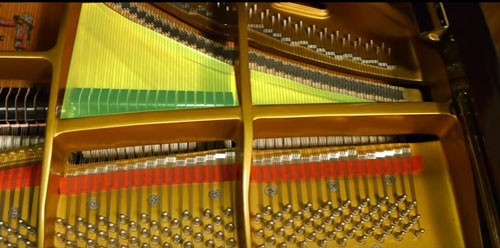Buying a piano can be a difficult decision. Budget, size, preference, there are dozens of factors that will influence your decision and the brand of the piano is undoubtedly going to be an important factor for many people. So, let’s say you found a piano you really love but you’ve never heard of the brand before. Is this a bad thing?
Everyone has probably heard of the names Yamaha and Steinway and they probably know a brand of a piano they grew up with. But most other brands might be a mystery to them. Maybe you’ve heard of Kawai, Baldwin or Mason & Hamlin. But there are literally hundreds of brands that have existed over the years and sometimes it’s not so easy to get information about them. It’s OK to be confused about this. We still get pianos in the store with brands I’ve never heard of or seen in person before; you’re not alone!
If you’re looking at new pianos you will probably see a lot of different names and some of them are probably ones you haven’t heard of before. Many of these are fictitious names or names of piano manufacturers that have gone out of business years ago and the rights to the names have been sold. These pianos are referred to as Stencil Pianos.
There are hundreds of companies manufacturing pianos in China and many exporters put different names on the pianos to expand their marketing. As a result you are going to have lots of names nobody has ever heard of. Does this mean these are bad pianos? Not necessarily; but they probably aren’t going to be high level instruments on the level of handmade pianos.
To make things even more complex there a number of boutique European piano brands that manufacture only a few dozen pianos a year. Yet many are of very high quality. The fact that you haven’t heard of these doesn’t make them bad instruments.
The great news is that today we can simply pull out our smart phones and look up any piano brand within seconds. If you are looking at a piano and you want to know a little bit about the history of the company don’t be afraid to do some research.
Another thing to keep in mind is that pianos were in their heyday about a hundred years ago in the this country. At one time there were over 1,800 piano manufacturers in the US (compared to only 3 today) and it’s impossible to know all of them. Many of these are great pianos and there are some hidden gems out there. So, just because you haven’t heard of a brand doesn’t make it a good or bad piano. Try to research as much as you can about the specific instrument you are looking at. Ultimately condition is of paramount importance.
There might be a time though where your research will be very limited. If you’ve fallen in love with an old piano from a manufacturer you’ve never heard of and you can only find a limited amount of information about it, you should not be afraid to purchase it if it’s something you are really drawn to. Finding replacement parts is not as hard as you might think as most pianos use uniform parts and any skilled technician should be able to repair or replace them for you unless the piano is extremely old.
If you find something out there you haven’t heard of and are still worried about the purchase, you are welcome to contact us directly and we will be more than happy to research it for you and give you information. info@LivingPianos.com (949) 244-3729











